

It is not the beauty of a building you should look at; it’s the construction of the foundation that will stand the test of time.
~ David Allan Coe
Every building within the construction industry has a foundation that all other components rely on for their existence. Whether it is the frame, the roof, or the plumbing, every building should be built with a foundation able to stand the test of time. For those in the construction sector seeking personal protective equipment (PPE), you've landed on MCR Safety's foundational page that houses all our individual construction subpages, which you can find above.

The foundation should stand the test of time
Within each construction subindustry, there is a great demand for PPE unique to that job, which is where MCR Safety enters the picture. MCR Safety recognizes how vital knowledge and information are in keeping workers safe from workplace hazards, which is why we've assembled a variety of construction resources in one spot. Across all of MCR Safety's construction industry pages, we highlight each specific industry, employment numbers, worker activities performed, potential hazards, and, most importantly, the safety gear necessary to help keep construction workers safe.

Those helping build the foundation, and all other facets of a building, need
to be protected at all times.
At the bottom of this page, feel free to drop us some feedback. If you wish to schedule a direct consultation, we can assist there, too! All you have to do is provide some information and we will have a trained 360° Safety Specialistcontact you. We work to protect people!
You can either jump directly to the construction areas that apply to you, or you can stay on this main page for a macro overview of this significant industry.
![]()
Click to jump directly to the Safety, Hazards and PPE section.

How big is the construction industry in the U.S.? Think of it this way: the construction industry builds the infrastructure and framework for the entire economy. Without roads and bridges, there would be little to no economic output. Those roads and bridges are built by construction workers, which means the industry plays a massive role within the economy. And this doesn't take into account the buildings, warehouses, and factories constructed for the manufacturing and sales of goods and services. According to IBISWorld, the construction industry produces over $2 trillion in economic activity, with over 3,000,000 establishments operating within it.These types of economic numbers clearly show how the construction industry has a significant impact on the U.S. economy.
The industry impacts establishments operating across multiple areas of the economy. Here is a look at the areas construction impacts, from the top of the pyramid to the bottom:
Raw Materials

Professional Services

The Trades

So, when you see a building going up near you, realize that its impact on the local and national economy began much earlier than its foundation being laid. As you will learn, the construction industry services a wide range of other sectors, such as oil and gas, manufacturing, and mining.

The construction industry's three primary subsectors are commercial construction, residential construction, and heavy civil engineering. Here are the core differences of each:
Commercial Construction
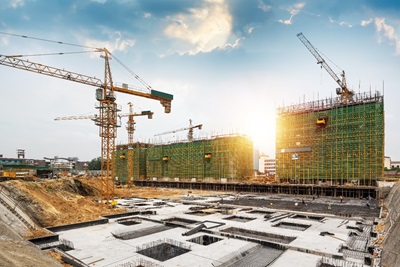
This type of construction involves building offices, factories, stores, warehouses, and other commercial spaces. It also entails the civil engineering projects that make up roads and bridges. The NAICS code 236200 classifies all establishments operating in this subsector. According to the Bureau of Labor Statistics (BLS), there are 844,000 workers finding employment in non-residential construction.
Civil Engineering
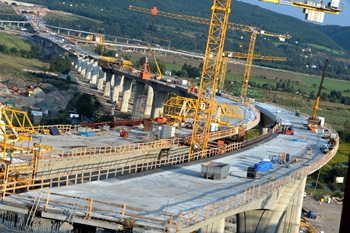
This segment of the construction industry works on infrastructure and public works projects such as dams, harbors, roads, bridges, and tunnels. The NAICS code 237000 classifies all establishments operating in this subsector. The BLS reports over one million workers in this specific subsector.
Residential Construction

This construction type is responsible for erecting the buildings in which people live. This may include apartments, condominiums, housing complexes, and single-family homes. The NAICS code 236100 classifies all establishments operating in this subsector. According to the BLS, 839,000 workers find employment in residential construction.

Twenty-one different subindustries are recognized as operating within the
construction industry and across the three core subsectors mentioned
above. Each one is distinguished by the specific type of contractor that
performs the work. For example, NAICS 23814 represents Masonry
Contractors, and NAICS 23835 represents Carpentry Contractors. Several
other types of contractors, such as framing, landscaping, and sewer line
construction, are covered in individual blog articles. We've also built
ten separate, distinct pages for the industries that employ the most
contractors.
We have touched on some of these contractor types above, but we figured it
would be helpful to include quick links to each of them here. Each of
these different contractors can be categorized into one of four distinct
types of contractor subsets. Here are the ten different pages, shown by
which contractor subset they fall under:
| Contractor Type | NAICS | Description |
|---|---|---|
| Site Preparation Contractors | 238910 | All construction projects require the worksite to being prepared for constructing buildings. As we identify in our article focused on Construction Phases, excavation contractors are the first to begin a project. |
| Foundation Contractors | 238100 | These contractors complete the foundation of any building. They are also involved in any alterations, maintenance, or repairs needed on foundations. Masonry, roofing, and poured concrete contractors all fall under this contractor subset. |
| Building Equipment Contractors | 238200 | This type of contractor installs or services the different mechanical systems that are used within a building. HVAC, electrical, and plumbing contractors fall under this specific subset of contractors. |
| Building Finishing Contractors | 238300 | As the name implies, these contractors are responsible for finishing a building. Drywall, carpentry, and painting contractors fall under this subset of construction contractors. |
Site Preparation Contractors
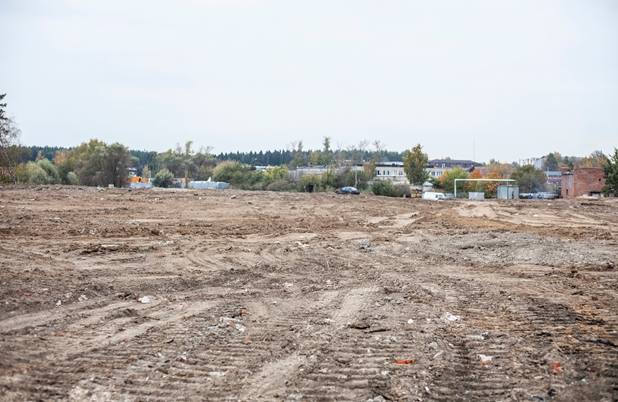
Excavation

Foundation Contractors

These contractors complete the foundation of any building. They are also involved in any alterations, maintenance, or repairs needed on foundations. Masonry, oofing, and poured concrete contractors all fall under this contractor subset. NAICS - 238100
Roofing Contractors

Masonry Contractors

Poured Concrete
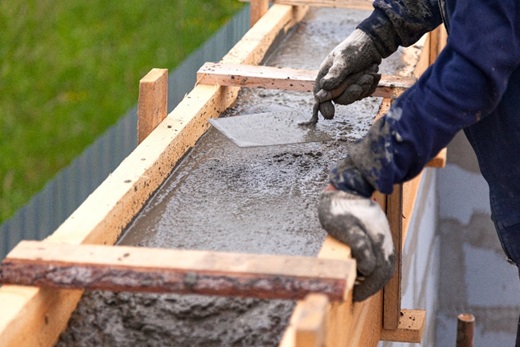
Building Equipment

This type of contractor installs or services the different mechanical systems that are used within a building. HVAC, electrical, and plumbing contractors fall under this specific subset of contractors. NAICS - 238200
Electrical

HVAC

Plumbing

Building Finishing

As the name implies, these contractors are responsible for finishing a building. Drywall, carpentry, and painting contractors fall under this subset of construction contractors. NAICS - 238300
Carpentry

Drywall

Painting

Road Construction is a subset of civil engineering

All construction projects require the worksite to being prepared for constructing buildings. As we identify in our article focused on Construction Phases, excavation contractors are the first to begin a project. NAICS - 238910

Overall, the construction industry is diverse when it comes to the
companies that participate within the industry. There are material
suppliers, contractors, builders, distributors, and developers. There are
even companies like MCR Safety that support the industry with personal
protective equipment (PPE).
The construction industry is comprised of a long list of businesses. We
highlight 50 of the most recognized construction companies in our article
titled Top Construction Companies. Here is a look at the top construction
companies employing the most workers.
AECOM Company - with over 87,000 employees, it is one of the world's largest infrastructure consulting firms. Their projects encompass transportation, ports, water, and government.
Bechtel Corporation – has worked on over 25,000 different construction projects since its inception in 1898.
D.R Horton - with over 7,000 employees, this is one of America's largest home construction companies. They have built over 790,000 new homes since 1978.
Fluor Corporation - has 45,000 employees who work on construction projects all over the world.
Kiewit – was founded in 1884 and is one of the most respected construction organizations in the U.S., employing over 23,000 workers.
Lennar Corporation – constructs new homes across 21 states, employing over 9,000 workers.
Skanska - is the fifth largest construction company in the world.
Tutor Perini – employs over 10,000 employees and is one of the largest general contractors in the U.S.
Zachary Industrial – operates across 400 nationwide locations, servicing multiple industrial sectors.
As mentioned, over 3 million businesses are operating in the construction industry. The companies mentioned above make up a big piece of the pie but in no way account for the entire industry. We encourage you to read our Top Construction Companies article, as more of the top construction companies are identified there. As you'll learn next, the work of construction companies is reflected in virtually every industry in the U.S.

As we discuss in our article
An Overview of Construction in Oil and Gas, over 30,000 construction workers find employment across the oil and gas
industry. Enbridge is one example of a construction company that primarily
services the oil industry by constructing pipelines. The company is
reported to move
25% of all crude oil
in America. Another example is
Quanta Services, a construction company that supports oil and gas with infrastructure
needs, such as pipeline construction. From setting up rigs to constructing
infrastructure, construction workers find employment all over the
industrial landscape.
What other industries employ more than 7 million construction workers?
Here are the top sectors for construction occupations:
| Employment Source | Employment |
|---|---|
| Federal, State, and Local Governments | 444,130 |
| Manufacturing | 203,890 |
| Mining | 86,890 |
| Waste Management | 86,480 |
| Retail Trade | 39,390 |
| Engineering Services | 38,160 |
| Utilities | 31,710 |
| Real Estate and Rental Leasing | 31,060 |
| Rail Transportation | 26,290 |
| Ship and Boat Building | 22,010 |
| Landscaping Services | 17,960 |
Government

Mining

Railroad

Landscaping
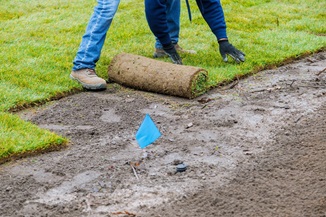
As you can imagine, construction trades are needed everywhere, as repair, maintenance, and alterations are always ongoing. Some construction workers may find employment working in the industry directly, while others may find work in another sector. The knowledge and information we share below around hazards, injuries and PPE apply to all construction workers, whether they work in the industry or as a construction worker for another sector. In the next section, we will begin exploring the activities construction workers are likely to perform on the job.

Today's construction industry, NAICS 23, is one of the top employment
industries globally, including within the U.S., where
7,439,360
people find employment. From excavating contractors clearing a
construction site to carpenters erecting the frame, the construction
industry is a critical component of the U.S. economic engine and the
overall global market.
Here are the top 10 subindustries with employment across the construction
industry:
Macro Industry Employment
| Subsector | NAICS | Employment |
|---|---|---|
| Civil Engineering | 237000 | 1,077,000 |
| Nonresidential Construction | 236200 | 839,400 |
| Residential Construction | 236100 | 820,600 |
| Contractor Subset | NAICS | Employment |
|---|---|---|
| Building Equipment Contractor | 238200 | 2,267,000 |
| Foundation Contractors | 238100 | 939,000 |
| Building Finishing Contractors | 238300 | 844,000 |
| All Contractors | 4,754,000 |
Contractor Employment
| Contractor Subset | Contractor | NAICS | Employment |
|---|---|---|---|
| Building Equipment Contractor | Plumbing and HVAC | 238220 | 1,143,000 |
| Building Equipment Contractor | Electrical | 238210 | 970,000 |
| Civil Engineering Contractors | Utility Construction | 237100 | 564,000 |
| Civil Engineering Contractors | Highway, Street, and Bridge | 237300 | 351,000 |
| Building Finishing Contractors | Drywall and Insulation | 238310 | 257,000 |
| Foundation Contractors | Poured Concrete | 238110 | 234,000 |
| Foundation Contractors | Roofing | 238160 | 221,000 |
| Building Finishing Contractors | Painting | 238320 | 214,000 |
| Civil Engineering Contractors | Power Line Construction | 237130 | 208,000 |
| Foundation Contractors | Masonry | 238140 | 150,000 |
| Civil Engineering Contractors | Land subdivision | 237200 | 39,500 |
| Overall Construction | 230000 | 7,492,000 |
As you can tell, we've descended from the industry's macro viewpoint,
which focused on each subset of construction to the industries
employing the most construction workers. Now we highlight the specific
number of workers from each core contractor subset. Our goal is to
make you aware of where construction workers primarily operate, as the
PPE will change depending on the environment where the activities are
being performed.
The next section highlights the day-to-day activities construction
workers in various subindustries are likely to perform. No matter if a
plumbing contractor, for example, finds employment within the
construction industry itself or at a manufacturing facility, the
activities they perform will be essentially the same.
On each subindustry page, we highlight the specific activities that pertain to that particular construction sector. Here are just a handful of the hundreds of activities performed across the entire construction industry, broken up by subindustry. We highlight four different activities from each, though undoubtedly this is not a comprehensive list of all activities these workers engage in:
| Subindustry | Image | Activity |
|---|---|---|
| Carpentry |
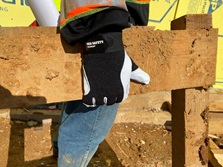
|
Assembling and fastening materials to make frameworks. Constructing building frameworks, including walls, doors, and door frames. Installing trim and paneling, frames, and windows. Working with a multitude of materials, including wood, plastic, fiberglass, and drywall. Applying sealing compounds to concrete surfaces. Chipping grinding, and scraping concrete. Installing anchor bolts. Using edging tools such as jointers. |
| Drywall |

|
Applying adhesives, sealants, and mortar. Cutting wood, metal, tile, and drywall. Patching rough drywall spots. Using edging tools such as jointers. |
| Electricians |

|
Bending cables and conduit. Connecting wires to circuit breakers and transformers. Servicing electrical power systems. Replacing exit lights, receptacles, switch boxes, conduits, and other electrical parts. |
| HVAC |

|
Drilling holes in floors, material, roofs, and walls to install equipment. Installing pipes, pumps, controls, blowers, dampers, and flues. Mounting cooling equipment. Refilling non-toxic refrigerants. |
| Masonry |

|
Building concrete beams and columns. Carrying, positioning, and unloading materials. Cutting brick, tile, stone, and other material to size. Laying paving bricks and blocks. |
| Painting |
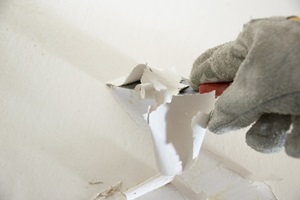
|
Cleaning rollers and sleeves. Scraping and sanding paint. Spraying paint, Washing and treating surfaces. |
| Plumbing |

|
Cutting, threading, and bending pipe. Installing piping and plumbing. Tightening bolts. Welding components and pipes. |
| Road Construction |
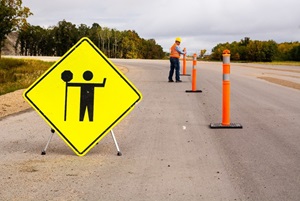
|
Clearing brush, Loading materials into equipment. Setting safety signs close to work sites. Spreading aggregates such as asphalt, sand, and gravel. |
| Roofing |

|
Bending flashing for chimneys. Installing skylights. Handling and layering shingles. Resurfacing and repairing roofs. |

Safety performing the activities listed above is imperative, as injuries can occur at any time. According to the BLS, in 2019, there were over 79,000 construction-related injuries. Overall, 10% of all hand injuries occur in construction, with over 11,610 occurring in 2019. Out of 988 U.S. industries, construction ranks #7 for hand injuries, and it ranks #3 for eye injuries.
When you look at the subindustries, some workers within those industries need to be extra cautious. Framing and roofing are two of the most dangerous construction subindustries. Here is a breakdown of the number of injury cases found within some of the subindustries we've covered:
| Subindustry | Total Recordable Cases per 100 Employees |
|---|---|
| Framing | 7.0 |
| Roofing | 4.8 |
| Glass and Glazing | 3.9 |
| Drywall and Insulation | 3.9 |
| Poured Concrete | 3.8 |
| Masonry | 3.5 |
| Plumbing | 3.5 |
| Water & Sewer Lines | 3.3 |
| Highway, Bridge & Street | 3.2 |
| Carpentry | 3.2 |
| Structural Steel | 3.1 |
| Site Preparation | 2.5 |
| Power and Communication Lines | 2.4 |
| Electrical | 2.2 |
| Painting | 2.2 |
| Tile and Terrazzo | 2.0 |
| Average for All U.S. Industries | 3.1 |
As the numbers clearly indicate, safety measures must be a high priority for all workers. And we're not done shedding light on which workers need to be on guard the most. Here is a look at which subindustries contribute to the most injuries in specific categories:
Cut and Puncture Injuries

| Rank | Industry | Total Cuts, Lacerations & Puncture Injuries |
|---|---|---|
| #1 | Plumbing and HVAC | 2,120 |
| #2 | Electrical | 1,610 |
| #3 | Roofing | 730 |
| #4 | Utility | 620 |
| #5 | Tile and Terrazo | 370 |
| #6 | Site Preparation | 590 |
Hand Injuries

| Rank | Industry | Hand Injuries |
|---|---|---|
| #1 | Plumbing and HVAC | 2,070 |
| #2 | Electrical | 1,450 |
| #3 | Utility | 1,090 |
| #4 | Poured Concrete | 710 |
| #5 | Road Construction | 490 |
| #6 | Drywall | 490 |
Thermal Injuries

| Rank | Industry | Thermal Burn Injuries |
|---|---|---|
| #1 | Plumbing and HVAC | 150 |
| #2 | Road Construction | 130 |
| #3 | Poured Concrete | 80 |
| #4 | Site Preparation | 70 |
Eye Injuries

| Rank | Industry | Eye Injuries |
|---|---|---|
| #1 | Plumbing and HVAC | 650 |
| #2 | Site Preparation | 290 |
| #3 | Electrical | 190 |
| #4 | Utility | 180 |
| #5 | Poured Concrete | 170 |
Harmful Substances

| Rank | Industry | Total Cases |
|---|---|---|
| #1 | Plumbing and HVAC | 430 |
| #2 | Roofing | 350 |
| #3 | Electrical | 200 |
| #4 | Road Construction | 170 |
| #5 | Water and Sewer Line | 80 |
| #6 | Masonry | 70 |
The multitude of different tasks performed on the job, whether as a
laborer, roofer, framer, or other construction worker, require workers
to wear appropriate protection at all times. Our primary purpose in
spotlighting specific injuries and injury rates across different
subindustries is to encourage workers to consider what kind of
protection they should wear while at work. All construction workers
should wear proper PPE before entering the worksite, but those who work
in subindustries with higher injury rates should be especially careful
when considering their PPE. On each construction subindustry page, we
highlight the specific hazards that are the primary culprits for causing
on-the-job injuries like the ones listed above, along with the types of
PPE workers should potentially consider wearing.
For peace of mind, workers rely on safety regulations to keep them out
of harm's way. In conjunction with the safety regulations and
administrative and engineering controls in place, workers turn to
PPE.

As you can imagine, the construction industry is heavily regulated, and the Occupational Health and Safety Administration (OSHA) has additional standards for the construction and general industry. This is necessary due to the number of worksites operating in the U.S. and the number of injuries that occur across all sectors. According to OSHA, over 252,000 construction sites are in operation at any given moment. Here are some of the primary hazards workers must always keep in mind while on a construction worksite:

OSHA 1926.851
addresses ladder safety. We cover ladders in-depth in our recent Ladder
Safety article.
As OSHA reports, failure to use PPE is one level of protection
construction workers have complete control of during the day to guard
against hazards. Thankfully, OSHA provides construction workers with
guidance and lots of assistance. In their
Worker Safety Series, OSHA highlights many of the top hazards workers face and recommends
solutions. They recommend gloves, for example, to fit snuggly. For safety
glasses, they recommend them to be worn at all times, as foreign
projectiles are a constant hazard.
What are OSHA standards? OSHA has developed specific rules, or standards,
to govern employers in maintaining a safe and healthy work environment for
employees. Using a numerical system, each standard specifies a different
safety-related rule. OSHA standard number 1926 is the overarching standard
for all the construction industry. The standard is in addition to the OSHA
1910.32, which stipulates employers must provide PPE at no cost to
employees when hazards are present. As we highlight in our article,
A Basic Overview of OSHA Standards for Construction, standard 1926 addresses all construction areas, from ladders to
scaffolding.
OSHA also recommends entry-level workers be
trained and certified
by completing an OSHA 10-hour construction course. This training addresses
the following areas:
Additional OSHA Construction Safety Resources
Listed below are some in-depth guides offered by OSHA to help keep workers
protected while performing construction work:
Construction work is dangerous, so it only makes sense that all workers pay attention to the resources that can help keep them safe. And one of those resource topics covered in-depth by OSHA is PPE, which also happens to be the area in which MCR Safety specializes.

Due to the number of injuries experienced by workers in this industry, safety gear for construction is a must-have product. We identify many of the core PPE categories within our article on Construction Safety, which we encourage you to read. For simplicity purposes, we've outlined those categories below, and we've put together some quick links for each of the core products the industry seeks out:

Construction Gloves

Being prepared for any job requires a construction worker to have various
gloves on hand, ready for the particular activity being performed. If
you're handling chemicals, the last thing you want is to continue wearing
a seamless glove that allows liquids to quickly penetrate the glove.
Instead, you'll want some waterproof options nearby.
Thankfully, MCR Safety's online glove catalog
will allow you to filter across our 1,000 available glove options easily,
from our cut-resistant gloves to leather work gloves or our strong latex
gloves. You might also want to consider our new PD43612, which provides
Penta Protection. This new technology protects workers across five
different ANSI performance areas: IMPACT 1, Puncture 5, Abrasion 4, Cut
A9, and Contact Heat 3. With this much protection offered in one glove,
you're reducing the number of gloves you'll need to get the job done
safely.


Check out our recent video on this A9 cut-resistant glove
Leather gloves are a big seller across all construction subindustries. Leather is abrasion-resistance and durable, making it an excellent solution for the rough applications construction workers perform. Our recent video showcases our entire leather work glove product line.
Winter Construction Gloves
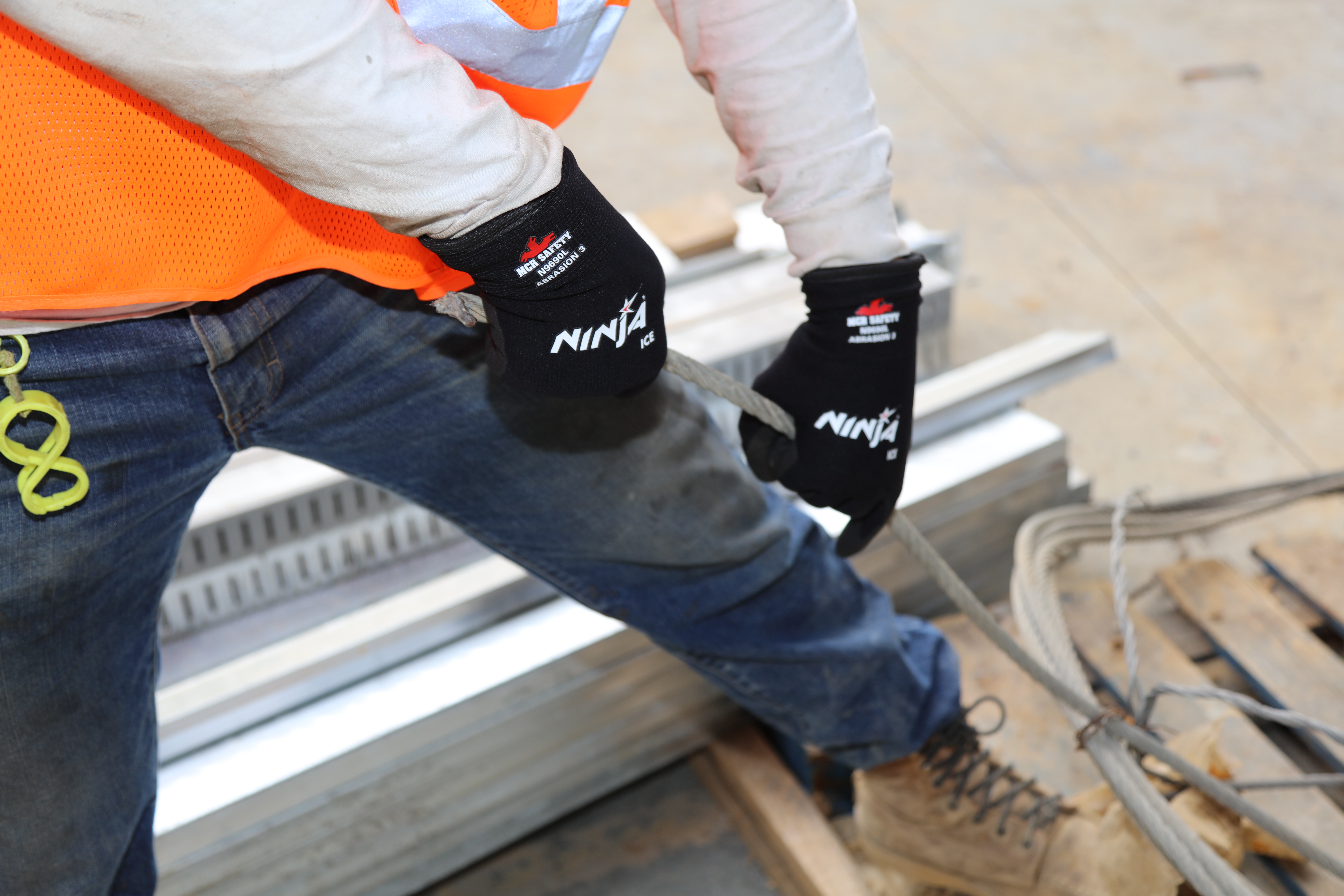
Working during cold winter months is no joke, which is why we've created a dedicated page that houses our entire winter glove lineup. Check out the new PD3951 and PD3954. Both gloves are super-lightweight, provide tons of protection, and are made for cold winter days.

PD3954 provides cut, impact, and winter protection.
Cut-Resistant and Puncture Resistant Gloves

Almost every industry deals with hazards that cause cuts, lacerations, and punctures. The construction industry is no different and actually presents more significant opportunities for cuts than most industries due to the amount of material handled. In fact, the BLS reports there were over 10,000 cut and puncture injuries that occurred in construction during 2019. Our Cut Protection page is an excellent resource for anyone looking to better understand ANSI cut scores and to see available glove options rated for each cut score. Check out our most recent video on cut- and puncture-resistant gloves below. (Video coming at a later date).

Whether it's daytime or nighttime, workers must wear protective garments that make them stand out. No matter your size, required fit, or preferred style, MCR Safety has the protective garments every construction worker needs. Let's highlight the options we have available.
Construction Safety Shirts

For those who like shirts in multiple colors, don't worry. We stock neon orange and lime shirts in both class 2 and class 3 styles. We break down all our shirts in a recent blog article, Hi-Vis Shirts: Staying Safe, Seen, and Stylish. Are you wondering what Class 2 means? We explain the classifications and discuss the moisture-wicking properties that make construction shirts so comfortable to wear. Construction workers work hard, and they deserve to be comfortable. MCR Safety offers safety shirts that fit the bill.
Construction Safety Vests

Being safe on any construction site means being seen. There is a lot of activity on a worksite, including moving materials with construction equipment. The last thing you want is not to be seen by a fellow worker who's operating heavy equipment. MCR Safety has you covered in this area, as we stock over 70 class 2 safety vests and over 30 class 3 safety vests. We also offer construction companies the opportunity to customize their PPE by adding their company logo onto the garments we sell. That's right; we can print your logo on a wide range of safety clothing!
For those who are environmentally conscious, check out our new recycled styles below. They are very cost-competitive compared to other class 2 safety vests on the market and help keep our planet clean.

Houses are being made environmentally friendly, why not safety vests, too?
Construction Boots

MCR Safety supplies several different PVC steel-toe work boots used across the industry. All it takes is losing your grip while carrying some heavy pipes and your feet are the prime target for a long-lasting injury.
Winter Bomber Jackets

Staying visible on a job site is a requirement all year long, even during winter months, and maybe even more so in snowy conditions. We offer insulated bomber jackets in multiple colors and styles. And guess what? We can customize bomber jackets with your company's logo, too!
Rainwear

During the hot summer months, thunderstorms and rain showers can pop up
out of nowhere, but staying comfortable and avoiding heat stress is
critical. We stock several breathable rainwater styles, like the 598
series option shown above. In fact, MCR Safety has over 100 various
rainwear options for those construction workers who want to be prepared
for the next downpour.
Keep everyone safe by wearing MCR Safety's high-quality PVC boots and
hi-vis safety products! We have all the options you
demand—lightweight boot designs, mesh material, competitive
reflective costs, garments with tons of pockets, and sporty two-tone
styles. You name it, and you'll find it available in our garment product
line. Oh, and did we mention we can customize it with your company's logo?
We only get one set of eyes in this lifetime, which means you have to protect them from worksite hazards. MCR Safety manufactures a wide range of eye protection to keep your vision safeguarded at work. And across all the options, we provide superior anti-fog coatings to keep your glasses clear and your vision unimpaired.

Construction Safety Glasses

Wearing ANSI-rated safety glasses is the minimum requirement while working in construction. However, who says those required glasses can't look great on you, too? With over 600 different models in our lineup, we have the style you prefer. Our new Memphis series safety glasses (shown below) are the latest style we've introduced. They feature comfortable temples and nose piece, a sporty look, and a cost-competitive price!

MP112
To better understand what makes this safety glass special, check out our video about the Memphis series safety glasses. (Video coming at a later date)
Safety Goggles

Construction workers are surrounded by dust and sand. As we highlight in The Best Safety Goggles article, whenever power tools are in use, it means chunks of material are flying in the air. Safety goggles completely cover the eyes and seal them from airborne hazards.
Face Shields

Anyone grinding away at metal or concrete on a construction site is going to need some secondary protection. Face shields are the answer, as they protect the entire face from flying objects. For additional information regarding the different materials used in manufacturing face shields, you'll want to read our article titled The Fundamentals of Face Shields.
Hoodies

For about half the year, during spring and fall, users still need protection from colder temperatures as the seasons transition. That's when our collection of hoodies enters the picture. Offering lightweight, comfy insulation, these hoodies will keep you warm year-round.
Accessories

No set of PPE is complete without some essential accessories! Check out
our great selection for workers to choose from, including balaclavas,
gaiters, and suspenders. We've got more on the way, too, so stay tuned!
A construction worker's most important tools are the ones they were born
with: their body, eyes, and hands. At MCR Safety, we're dedicated to
creating the very best PPE products to keep construction workers safe!

We want to see the BLS injury stats we shared with you earlier keep coming
down, as that means we're doing our part in bringing leading-edge PPE
technology to market. With construction conditions producing thousands of
injuries each year, workers turn to MCR Safety for premier PPE,
recommendations, and guidance. Why do workers turn to us?
MCR Safety has a proven track record of over 40 years protecting
construction workers. This means we know the hazards faced by those
finding employment in construction, so much so that we have broken down
the construction industry into the ten distinct subindustries mentioned
above. We know that each subindustry faces unique hazards. In the event
that we do not cover your unique hazard, we hope you'll tell us so we can
address it.
Let MCR Safety be your trusted PPE manufacturer and safety gear supplier
for construction gloves, construction safety glasses, and construction
garments.

Most would say that the world has drastically changed over the past 50 years. All you have to think of is the World Wide Web, and one would agree that changes are taking place. Industries like construction are changing rapidly, too. Here are some recent trends that have popped up across the sector:
Advanced House Technology

This technology is changing the construction landscape, specifically the homes consumers purchase. Technology is changing residential construction, from automatic temperature sensors and window darkening to 3D printed buildings and wireless systems.
Immersive Virtual Reality (IVR)

This technology allows construction companies to better visualize the construction project, helping detect design errors before construction begins.
Leadership in Energy and Environmental design (LEED)

This rating and certification system provides a uniform rating system to validate green-friendly construction buildings that are highly efficient and money-saving.
Labor Shortage

As we highlight in our article on Skilled vs. Unskilled Trades, 80 percent of firms have a tough time filling positions.
We've only scratched the surface of current industry trends with the above examples. We encourage you to check out the Construction Institute's technology page to see more innovations and game-changing technologies transforming the industry. In regards to construction institutes, let's close out this page by providing insight into the companies out there offering construction education specifically designed for construction professionals.
![]()
We have provided a lot of useful resources, data, and information above. However, many industry-specific organizations can offer more detailed information that construction companies and workers rely on every day. Here are some organizations and associations whose websites you should consider viewing:
Associated Builders and Contractors
It is an association with 69 chapters that represent over 20,000 contractors.
Associated General Contractors of America
Represents 27,000 firms across the industry, from general contractors to specific service providers.
American Institute of
Architects
It is the voice for architecture firms and provides resources to help professionals succeed.
Construction Specifications Institute (CSI)
It was founded in 1948 and has transformed industry standards.
Lean Construction
Institute
provides members with tools and technology to implement lean production.
Manufactured Housing Institute
It is the leading institute representing all parts of the factory-built housing industry.
National Association of Home Builders
covers all facets of the industry: builders, developers, contractors, and business. They are the largest association for the industry, representing 140,000 members.
National Association of the Remodeling Industry
connects homeowners with professional remodelers, providing consumers with helpful information when remodeling.
All construction associations and institutes have one thing in common:
keeping construction professionals armed with the most relevant,
up-to-date information possible to help them best perform their job. Many
employees in this industry look to these associations and organizations
for answers.
We've highlighted a lot of construction information and thrown a bunch of
industry stats at you. This page's remaining part showcases some of the
most common hazards, and different PPE options construction contractors
should consider wearing while performing their work.

Choosing the right gloves is a critical safety step. This is even more true for concrete workers.

We offer many different glove options for construction, as the needs vary widely across the industry. Learn which glove materials offer the best protection for your specific application.

Get the real stats! Learn what the top injuries are within the construction industry. Knowing is half the battle of keeping you safe.
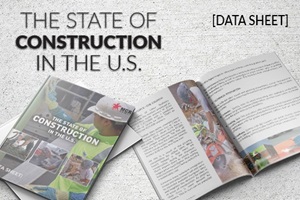

Each year, more than 2.5 million eye injuries occur. Protect yourself by finding the right eye protection for the job.
Learn more about MCR Safety product features that protect against these common hazards.
Click "Learn More" to find info on protecting yourself against these hazards and find the right gear for the job.
The most common cause of hand injuries is blunt trauma. Overall, 76% of all injuries are the result of cut and crush. Construction workers face a multitude of close quarter environments resulting in pinch point injuries.
Flying debris and dust is everywhere on a jobsite. Without proper eyewear, it is sure to cause a hazardous loss of visibility. Let us help keep your eyes fixed on the job at hand.

 Why MCR Safety Products?
Why MCR Safety Products? 
MCR Safety manufactures and supplies Personal Protective Equipment (PPE). Simply put, WE PROTECT PEOPLE! We are known world-wide for our extensive product line depth surrounding gloves, glasses, and garments spanning across numerous industries. We offer the total package of safety gear encompassing industrial gloves, safety glasses, protective garments, welding gear, industrial boots, Flame Resistant (FR) gear, face shields, and much more. From a glove standpoint alone, MCR Safety manufacturers and supplies over 1,000 different style gloves. Here are some of the many reasons MCR Safety is your go to source for PPE:
MCR Safety is recognized as a global manufacturer stretching across six countries, with both distribution and manufacturing facilities. Our core competency and specialty is manufacturing and supplying protective gloves, glasses, and garments. The information shown and provided on MCR Safety’s website, its safety articles, industry resource pages, highlighted hazards and safety equipment should be used only as a general reference tool and guide. The end user is solely responsible for determining the suitability of any product selection for a particular application. MCR Safety makes no guarantee or warranty (expressed or implied) of our products’ performance or protection for particular applications.